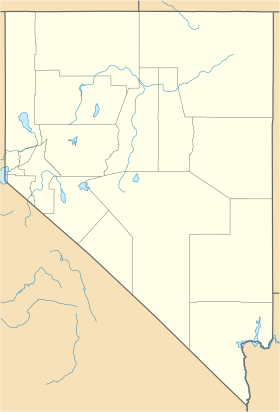Leonard Rockshelter facts for kids
|
Leonard Rockshelter
|
|
| Nearest city | Lovelock, Nevada |
|---|---|
| Area | 9.5 acres |
| NRHP reference No. | 66000457 |
Quick facts for kids Significant dates |
|
| Added to NRHP | October 15, 1966 |
| Designated NHL | January 20, 1961 |
The Leonard Rockshelter, also known as 26PE14, is a very old place in Nevada, USA. It was found in 1936. This site is special because its layers of earth are very well-preserved. These layers show that people lived there on and off from about 6710 BC to AD 1400.
The place was named after Zenas Leonard. He was an explorer who traveled through the Humboldt Valley in 1833. In 1961, the Leonard Rockshelter was named a National Historic Landmark. This means it's a very important historical site. It was also added to the National Register of Historic Places in 1966.
About Leonard Rockshelter
The Leonard Rockshelter is located on a rocky hill in Pershing County, Nevada. This hill is made of limestone. The rock layers here are pushed sharply upward. Over time, new layers of dirt and rock have covered parts of it.
The rockshelter faces north and has slopes of loose rocks below it. Some parts of the sheltered area are now covered by fallen rocks. This makes it a bit hard for scientists to dig and study the site.
Discovering the Past
People first noticed the area in 1936. Miners who were looking for guano (bat droppings) found old items there. These items included shell beads, feathers, and wooden tools.
In 1937, a team from the University of California, Berkeley spent two days at the site. They collected many more samples. Scientists later used a special method called radiocarbon dating to find out how old some of these items were. They found that some items dated back to between 6710 and 5088 BC.
Scientists have found signs of at least three different times when people lived at the rockshelter long ago. They also found items from the 1800s. One amazing find from around 3500 BC was a baby buried in a basket. The basket had turned completely black over time. The oldest things found at the site are from about 9249 BC. This was not long after a huge ancient lake, called Lake Lahontan, dried up in the area.



